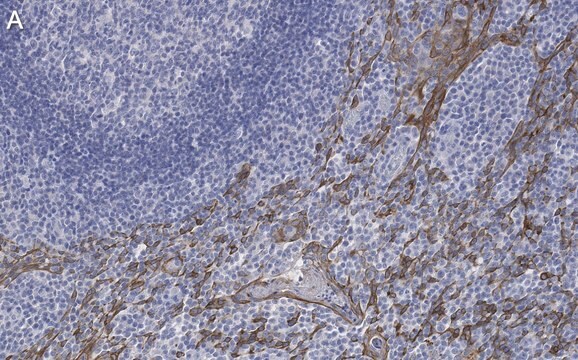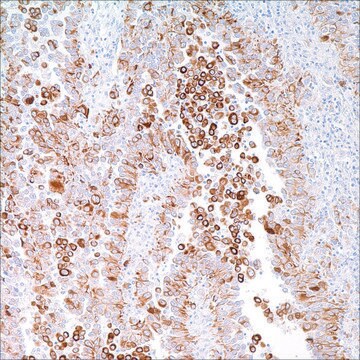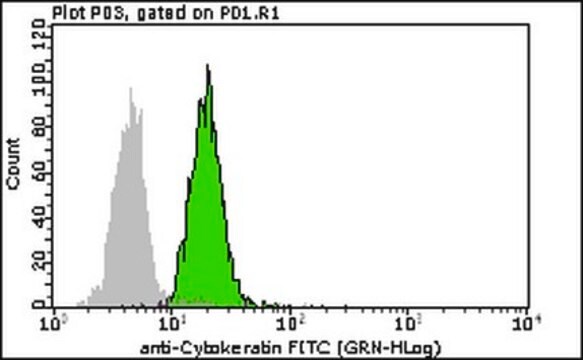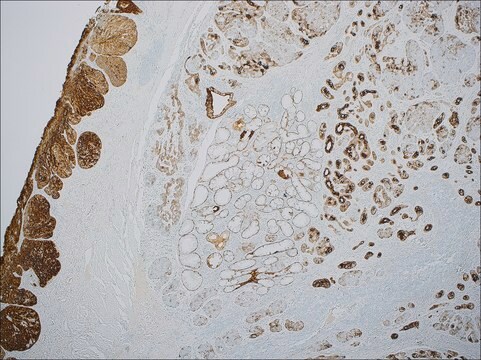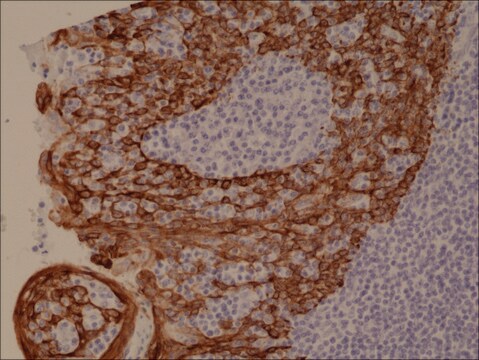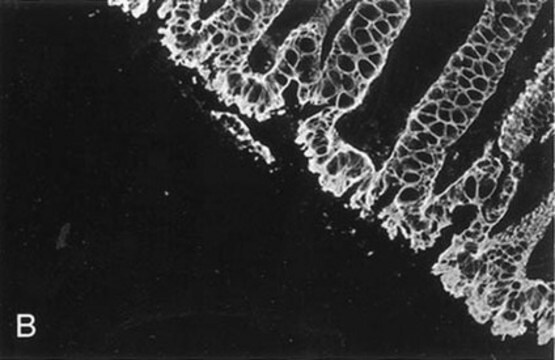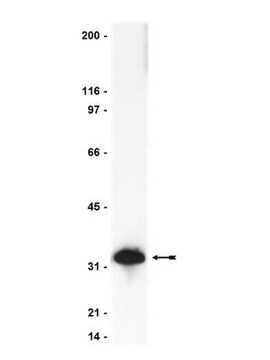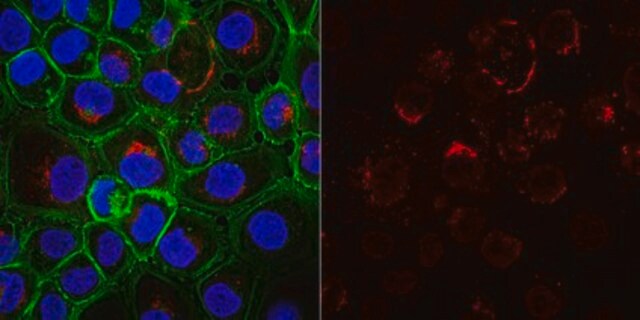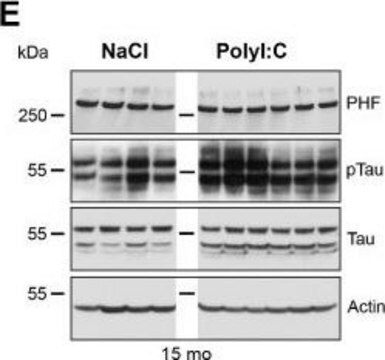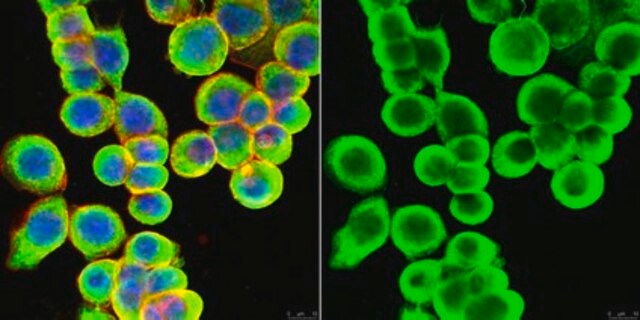MAB1620
Anti-Cytokeratin 5 Antibody, 6, clone D5/16B4
clone D5/16B4, Chemicon®, from mouse
Synonyme(s) :
58 kDa cytokeratin, Cytokeratin-5, CK-5, Keratin-5, K5, Type-II keratin Kb5
About This Item
Produits recommandés
Source biologique
mouse
Niveau de qualité
Forme d'anticorps
purified immunoglobulin
Clone
D5/16B4, monoclonal
Espèces réactives
rat, mouse, human
Fabricant/nom de marque
Chemicon®
Technique(s)
immunofluorescence: suitable
immunohistochemistry: suitable (paraffin)
western blot: suitable
Isotype
IgG1
Numéro d'accès NCBI
Numéro d'accès UniProt
Conditions d'expédition
wet ice
Modification post-traductionnelle de la cible
unmodified
Informations sur le gène
human ... KRT5(3852)
Description générale
Spécificité
Immunogène
Application
A 1:50-1:100 dilution from a previous lot was used for paraffin, high-temperature antigen retrieval required (Pressure cooker, Citrate/EDTA buffer pH 6.0, 4 minutes at full pressure).
Immunofluorescence:
A previous lot of this antibody was used in Immunofluorescence.
Western blot:
Recognizes a 58kDa and 56kDa band corresponding to cytokeratin 5 and 6.
Optimal working dilutions must be determined by end user.
Cell Structure
Cytoskeleton
Qualité
Western Blot Analysis:
1:500 dilution of this lot detected cytokeratin 5/6 on 10 ug of A431 lysates.
Description de la cible
Forme physique
Stockage et stabilité
Remarque sur l'analyse
A431 cell lysate, human bladder tumor tissue.
Autres remarques
Informations légales
Clause de non-responsabilité
En option
Code de la classe de stockage
10 - Combustible liquids
Classe de danger pour l'eau (WGK)
WGK 2
Certificats d'analyse (COA)
Recherchez un Certificats d'analyse (COA) en saisissant le numéro de lot du produit. Les numéros de lot figurent sur l'étiquette du produit après les mots "Lot" ou "Batch".
Déjà en possession de ce produit ?
Retrouvez la documentation relative aux produits que vous avez récemment achetés dans la Bibliothèque de documents.
Notre équipe de scientifiques dispose d'une expérience dans tous les secteurs de la recherche, notamment en sciences de la vie, science des matériaux, synthèse chimique, chromatographie, analyse et dans de nombreux autres domaines..
Contacter notre Service technique